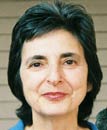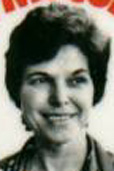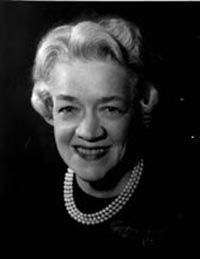Next up on the list is New York City. Well. My entries have been getting longer and longer, and if Shakespeare is at all correct, that means this blog is getting less and less witty. Therefore, I mean to keep this as brief as possible, yet with the goal of finding pieces of information that might be new to any variety of reader who happens by this way. So I will try to provide a mixture of trivia, including the common and the lesser-known. Hopefully, you will find something here about the United States' largest city that was heretofore unknown to you.

The flag of New York City
(Image from A View on Cities)
- New York City was originally the capital of the United States until 1790.
- Broadway, the street known for its theaters, is one of the longest streets in the world, clocking in at 150 miles. It used to be a trade route for the Algonquins in the way-back day, and it was originally called the Wiechquakeck Trail. Its official name today is Highway 9.

Broadway in 1908
(image from Hello New York)

Broadway in 2004
(Photo from travelphoto.net)
- The Bronx, named for Swedish settler Jonas Bronck, is the only borough connected to the mainland. The rest of New York City is on islands.
- Queens was named after Queen Catherine of Braganza, who was married to King Charles II of England at the time. Braganza is in Portugal.
- Staten Island may be best known for its ferry, which carries some 65,00 people per day. The ferry is not one boat but actually a fleet of 9 boats, which can carry 1,200 to 6,000 passengers each, per trip.
- The southern tip of Manhattan is almost entirely landfill. The "natural" land comprises about 75% of the whole of Manhattan.
- Central Park is larger than Monaco.
- Greenwich Village hosts the world's largest Halloween parade, with giant puppets, roughly 50,000 costumed participants, and an estimated attendance of 2 million people watching in 2006.

This giant skeleton puppet won its designer Eli Worden a commission so he could build it for the Halloween Parade in Greenwich Village.
(Photo from New York's Village Halloween Parade site)
- Not to be outdone, Booklyn hosts the Coney Island Mermaid Parade, which takes place the first Saturday after the summer solstice. Everybody dresses up -- like mermaids, sea creatures of various kinds, and the occasional lighthouse.
- The oldest known cattle ranch in the United States was at Montauk, Long Island, and started functioning in 1747.
- NYC's first public transportation was a 12-seat stagecoach called "Accommodation," and it began service in 1827.

Ticket booth in City Hall station, 1904. Tickets were sold for the subway until 1920, when coin-operated turnstiles were installed.
(Photo from New York City Transit MTA)
- The first daily Yiddish newspaper was printed in New York City in 1885.
- The New York Post, established by Alexander Hamilton in 1803, is the oldest circulating newspaper in the US.
- Toilet paper was invented in NYC by Joseph C. Gayetty, in 1857.
- The beaded curtain that hangs in the New York State Theater has 8 million gold colored metal balls, one for every NYC citizen at the time the curtain was first hung, in 1964.

Interior of the New York State Theater, which is part of the complex that is the Lincoln Center for the Performing Arts. The theater seats 2,804 people, and is the home of the New York City Ballet and the New York City Opera.
(Photo from Andreas Praefcke's postcard collection)
- By the numbers:
- Total number of tourists in 2005: 42.6 million
- Amount they spent that year: $22.8 billion, or about $535 per person
- Hotel rooms: 71,000
- Places to eat out: 18,696
- Licensed taxis: 12,778
- Buses: 4,489
- People riding the subway on an average weekday: 4.5 million
- Number of rats: est. 44 million to 96 million
- Animal bites hotline: 212-566-2068
- Number of hurricanes that have struck NYC: 2 (1821 and 1938)

The Brooklyn Bridge, designed by John Roebling, who was paid $8,000 annually starting in 1867. In 1869 his foot was crushed by a ferry, requiring that his toes be amputated. He declined anesthesia and survived the operation, but died a few weeks later from lockjaw. His son took his place and oversaw the bridge's completion.
(Photo from Living Cities)
Well, it turned out to be a fairly lengthy entry after all. But the pictures take up a lot of room! And hey, it is New York City, after all.
If you would like to ask the Apple Lady to find facts for you about your favorite place, just ask in the comments field of this entry.
Sources
New York City & Company, Visit New York City, Did You Know?
50states.com, New York Facts and Trivia
NY.com, NYC Trivia
About.com, How Did Queens Get Its Name?
Hypertextbook, The Physics Factbook, Number of Rats in New York City
Robert Roy Britt, "History Reveals Hurricane Threat to New York City," LiveScience, June 1, 2005
New York City Ballet, Fun Facts about New York State Theater
Brooklyn Bridge Facts, History, and Information






























